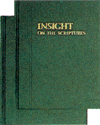Sometimes there is a basis for saying something like this. For example: The Message Bible, the Clear Word Bible, and the Book of Yahweh have text that was changed to support certain beliefs. It is not uncommon to see that. Yes, people are sometimes warranted in saying that.
In this two part analysis, we will look at two different types of Bible that people attack. Bibles translated from the Textus Receptus (focusing on the King James Version) and Sacred Name Bible's. What reasons do they have for attacking these Bibles? Are these reasons valid? Let us see.
One movement that has been getting remarkably louder in this day and age is the King James-Only Movement. The people who support this movement each have different opinions as to why it is the only version to be used. I want to focus on the one that I find most ridiculous--The King James Version is inspired of God!
Actually, this falls into about three different categories. 1) That the Textus Receptus is inspired, 2) That the King James Version is inspired, and 3) The King James Version is New Revelation. This last group is what we will attempt to analyze. These people even say that all ancient Greek manuscripts can be "corrected" by using the King James Version!
There are many verses in the King James Version that are not to be found in many other Bibles. One example is 1 John 5:7-8. This verse says, "For there are three that bear record in heaven, the Father, the Word, and the Holy Ghost: and these three are one. And there are three that bear witness in earth*, the Spirit, and the water, and the blood: and these three agree in one." (King James Version) Scholars today generally agree that this is an interpolation, or later addition to the text. KJV-Only supporters in this category will not agree.
Where did 1 John 5:7-8 come from? If we see its history that will answer a lot of questions.
This interpolation, called the Comma Johanneum, is non-existent in any writing of the early church "fathers" until about the fourth century. It was quoted for the first time in the Latin Homily Liber Apologeticus**. Dr. Daniel B. Wallace said in an article about this:
"Apparently the gloss arose when the original passage was understood to symbolize the Trinity (through the mention of three witnesses: the Spirit, the water, and the blood), an interpretation that may have been written first as a marginal note that afterwards found its way into the text."[1]
All in all, the Comma appears in only about eight ancient Greek manuscripts, and none of the very authoritative due to their late date. If the Comma Johanneum were authentic, it would appear in all manuscripts.
Dr. Bruce Metzger, after commenting on the Comma's absence in most Greek texts, says:
"(2) The [Comma Johanneum] passage is quoted in none of the Greek Fathers, who, had they known it, would most certainly have employed it in the Trinitarian controversies (Sabellian and Arian). Its first appearance in Greek is in a Greek version of the (Latin) Acts of the Lateran Council in 1215.
(3) The passage is absent from the manuscripts of all ancient versions (Syriac, Coptic, Armenian, Ethiopic, Arabic, Slavonic), except the Latin; and it is not found (a) in the Old Latin in its early form (Tertullian Cyprian Augustine), or in the Vulgate (b) as issued by Jerome ... or (c) as revised by Alcuin..."[2]
So, according to Metzger, the Vulgate (as issued by Jerome) did not contain the Comma. Later copies of the Vulgate did contain the Comma after it was written in, the first time being about the year 800 C.E. These were then back-translated into Greek, making some late, ancient Greek manuscripts contain the Comma. This oldest Greek manuscript, as well as four others, only have the Comma in the margin as an alternate reading.
With all of this evidence at hand, King James Only followers will still say that the Comma Johanneum is supposed to be in the Bible! I have had the privilege of talking to a few of them. They will not see any reason at all. They want to rely on the Textus Receptus and all of its flaws. Now, therefore, it will be beneficial to look at the Textus Receptus as a whole. What is its history?
The Textus Receptus is a Greek translation made by a man named Erasmus. At the same time that Erasmus was making a new Latin New Testament, he started work on a Greek New Testament. It is generally thought that he made these two at the same time to show that a Latin translation was superior to a Greek translation. He even said that the Greek MSS of the time were corrupted and wrongly rendered by careless scribes and copyists.
The first edition of the Greek New Testament by Erasmus was rushed and therefore had many errors. Regardless, it proved a success and a reprint had to be made. In this second edition, all of the errors were edited out. Further, in many places, Erasmus actually changed the Greek text to match the Latin text!
The third edition of the Textus Receptus is where the first addition of the Comma Johanneum can be found. The Comma was only added because one Greek edition of the New Testament contained it, and this having been translated from the Latin!
The third edition of the Textus Receptus was then viewed as authoritative and many other Greek New Testaments by other people added the Comma Johanneum. From these, the King James Version was translated. Obviously, the Textus Receptus was a very distorted Bible translation. That is why most do not use this translation as a basis today. And since the King James Version is based off of the Textus Receptus, it is not a good translation either. Documented historical evidence shows that the King James Version cannot and is not inspired of God or even the best on the market.
The King James Version, nor any other Bible based on the Textus Receptus, can be the best translation.
*The bold text is the interpolation.
**Authorship unknown. Probably written by Priscillian of Ávila or his close follower, Bishop Instantius.
References
[1] The Comma Johanneum and Cyprian
[2] Textual Commentary (2nd edition), pg. 648



























